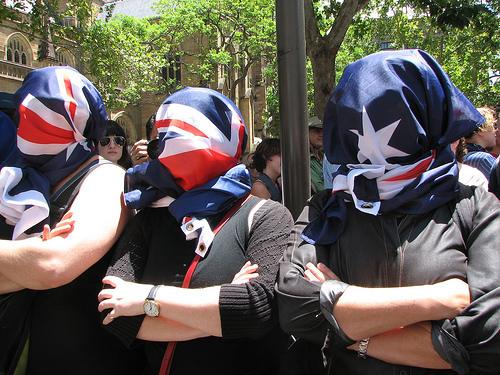From "Looking for Alibrandi" to "Does my Head Look Big in This?": The role of Australian teenage novels in reconceptualising racialised-gendered identities
Main Article Content
Abstract
The similarities in how the authors have inscribed race and ethnicity on the subjectivities of their female characters, despite the novels being written at different points in time and focusing on different racial and ethnic identities, suggest that what it means to be a raced subject in Australia has more to do with the significance of all-at-once ‘belonging’ and ‘not belonging’ to the dominant culture, of ‘inclusion’ and ‘exclusion’ and of ‘sameness’ and ‘otherness’, than it has with the unique characteristics of biological race and ethnic identification. The paper argues that this kind of fiction carries with it an implicit pedagogy about race relations in Australia, which has the potential to subvert oppressive binary dualisms of race and gender by demonstrating possibilities for the development of hybrid cultural identities and ‘collaborations of humanity’.
Article Details
Section
References
Abdel-Fattah, R. (2005) Does my head look big in this? Sydney, Pan MacMillan Australia Pty Ltd.
Agamben, G. (1999) Remnants of Auschwitz: the Witness and the Archive (translated by Daniel Heller-Roazen), New York: Zone Books.
Ang, I. (1996) "The curse of the smile: ambivalence and the "Asian" woman in Australian multiculturalism", Feminist Review Vol. 52: 36-49. https://doi.org/10.1057/fr.1996.5
Ang, I. (2001) On not speaking Chinese: Living between Asia and the West, London: Routledge.
Ashcroft, B., Griffiths, G. & Tiffen, H. (Eds.) (2006) The Post-Colonial Studies Reader (2nd Edition), London: Routledge.
Bhabha, H. (1994) The Location of Culture, New York: Routledge.
Gleitzman, M. (2004) Girl Underground, Australia: The Penguin Group.
Hall, S. (1990) "Cultural Identity and Diaspora", Identity: Community, Culture, Difference (Ed. Rutherford, J) London: Lawrence and Wishart.
Jefferson, A. (1982) "Structuralism and Post-Structuralism", in A. Jefferson & D. Robey (eds) Modern Literary Theory: A Comparative Introduction London, Batsford Academic & Educational Ltd.
Marchetta, M. (1992) Looking for Alibrandi, Victoria: Penguin Books Australia Ltd.
Odeh, LA (1997) "Post-colonial feminism and the veil: Thinking the difference", in M.M. Gergen, & S.N. Davis (eds) Toward a new Psychology of Gender: A Reader New York: Routledge.
Poynting, S, Noble, G, Tabar, P & Collins, J (2004) "The Arab Other" in Bin Laden in the Suburbs: Criminalising the Arab Other, Sydney: Sydney Institute of Criminology Series.
Ramazanoğlu, C (with Janet Holland) (2002) Feminist Methodology: Challenges and Choices, London: Sage Publications.
Rushdie, S (2006) "Imaginary Homelands", in B. Ashcroft, G. Griffiths, & H. Tiffen, (eds)) The Post-Colonial Studies Reader (2nd Edition) London: Routledge.
Walker, MB (1998) Philosophy and the Maternal Body: Reading Silence, London: Routledge.
Walkerdine, V (1984) "Someday my prince will come: young girls and the preparation for adult sexuality", in A. McRobbie & M. Niva, M (eds) Gender and Generation, England: Macmillan.
Young, R (1995) Colonial Desire, London: Routledge.
